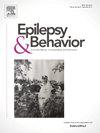Physical activity in young people with epilepsy: development of an informational software application
IF 2.3
3区 医学
Q2 BEHAVIORAL SCIENCES
引用次数: 0
Abstract
Background
Research suggests that physical activity (PA) has potential benefits for young people with epilepsy (YPE); however, further studies are needed to explore how healthcare providers can promote effective interventions in collaboration with YPE and their families.
Objective
This knowledge translation project aimed to understand healthcare providers’ perspectives on PA discussions and design a tool to support PA engagement among YPE.
Methods
Surveys of specialists, nurses, nurse practitioners, and trainees in pediatric neurology and epilepsy programs in the USA, Canada, Israel and Turkey were conducted to assess current PA discussions in clinical care. Inductive content analysis of responses was guided by eight themes from our previous research. Findings from the surveys and prior focus groups with YPE and their parents informed the development of a web app.
Results
Among 73 respondents, healthcare providers emphasized the need for an accessible, easy-to-use online tool that YPE can understand and take home to review. They identified 23 activities YPE discussed during clinical visits. Content analysis of survey results yielded a Krippendorff’s Alpha of 0.846 (95% CI: 0.717–0.967) and informed the app content. Many providers reported that time constraints and limited resources hinder PA discussions in clinical settings.
Conclusion
Healthcare providers suggest that an accessible, user-friendly, cost-free tool may help address PA concerns and promote active lifestyles for YPE and their families. This project describes the early stages of using a translational research model to bridge evidence and practice, turning research findings into actionable interventions for patients and families.

青少年癫痫患者的身体活动:信息软件应用程序的开发
研究表明,身体活动(PA)对年轻癫痫患者(YPE)有潜在的益处;然而,需要进一步的研究来探索卫生保健提供者如何与YPE及其家庭合作促进有效的干预措施。目的:本知识翻译项目旨在了解医疗保健提供者对PA讨论的看法,并设计一个工具来支持YPE中PA的参与。方法对美国、加拿大、以色列和土耳其儿科神经病学和癫痫项目的专家、护士、执业护士和培训生进行调查,以评估目前临床护理中PA的讨论情况。归纳内容分析的回答是由八个主题从我们之前的研究指导。调查结果和先前与YPE及其父母的焦点小组的调查结果为网络应用程序的开发提供了信息。结果在73名受访者中,医疗保健提供者强调需要一个易于访问,易于使用的在线工具,YPE可以理解并带回家进行检查。他们确定了type在临床访问期间讨论的23项活动。对调查结果进行内容分析,Krippendorff 's Alpha为0.846 (95% CI: 0.717-0.967),并为应用内容提供信息。许多医疗服务提供者报告说,时间限制和有限的资源阻碍了临床环境中PA的讨论。结论:医疗保健提供者建议,一种方便、用户友好、免费的工具可能有助于解决PA问题,并促进YPE及其家人积极的生活方式。该项目描述了使用转化研究模式的早期阶段,以弥合证据和实践,将研究成果转化为针对患者和家庭的可操作干预措施。
本文章由计算机程序翻译,如有差异,请以英文原文为准。
求助全文
约1分钟内获得全文
求助全文
来源期刊

Epilepsy & Behavior
医学-行为科学
CiteScore
5.40
自引率
15.40%
发文量
385
审稿时长
43 days
期刊介绍:
Epilepsy & Behavior is the fastest-growing international journal uniquely devoted to the rapid dissemination of the most current information available on the behavioral aspects of seizures and epilepsy.
Epilepsy & Behavior presents original peer-reviewed articles based on laboratory and clinical research. Topics are drawn from a variety of fields, including clinical neurology, neurosurgery, neuropsychiatry, neuropsychology, neurophysiology, neuropharmacology, and neuroimaging.
From September 2012 Epilepsy & Behavior stopped accepting Case Reports for publication in the journal. From this date authors who submit to Epilepsy & Behavior will be offered a transfer or asked to resubmit their Case Reports to its new sister journal, Epilepsy & Behavior Case Reports.
 求助内容:
求助内容: 应助结果提醒方式:
应助结果提醒方式:


